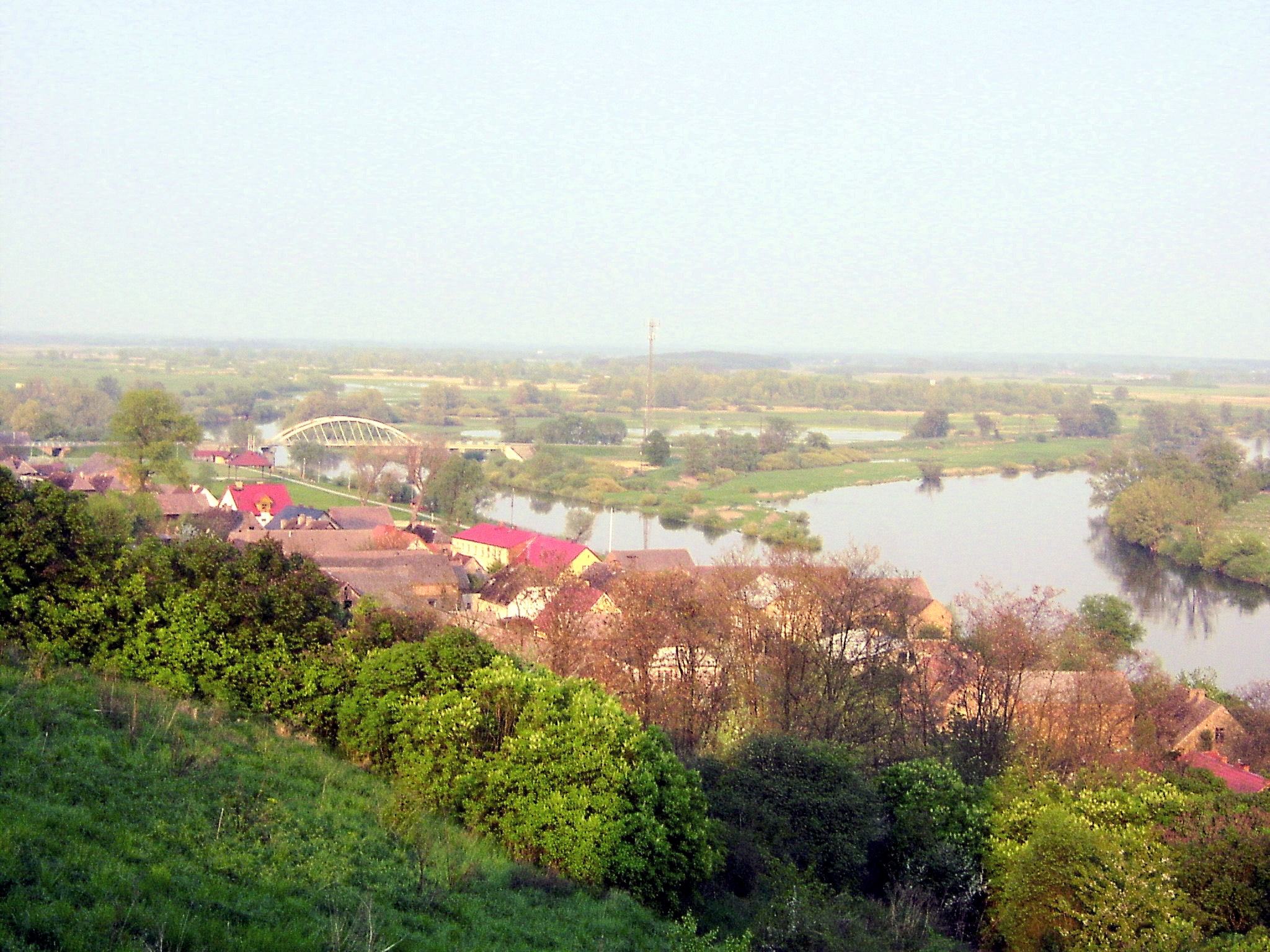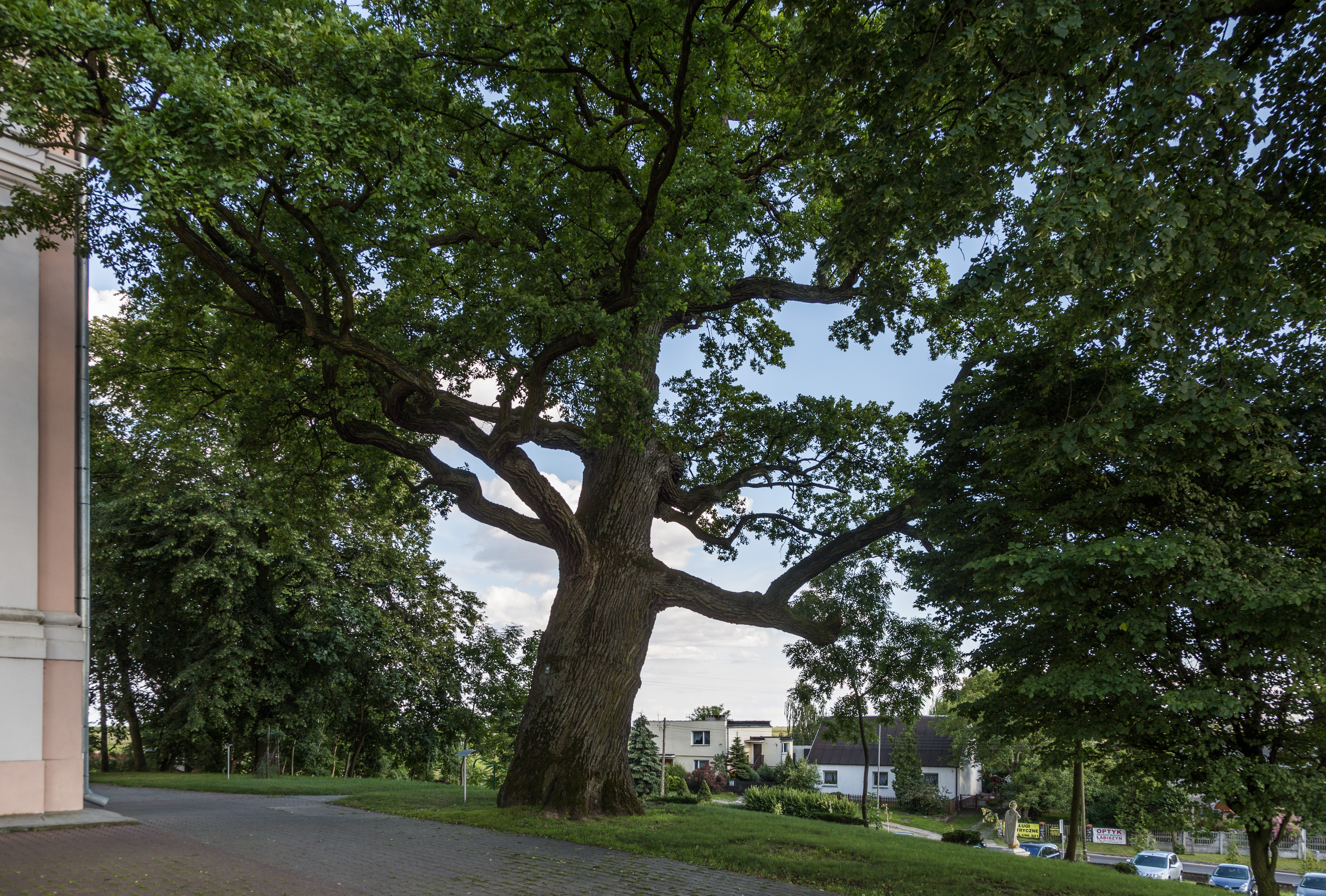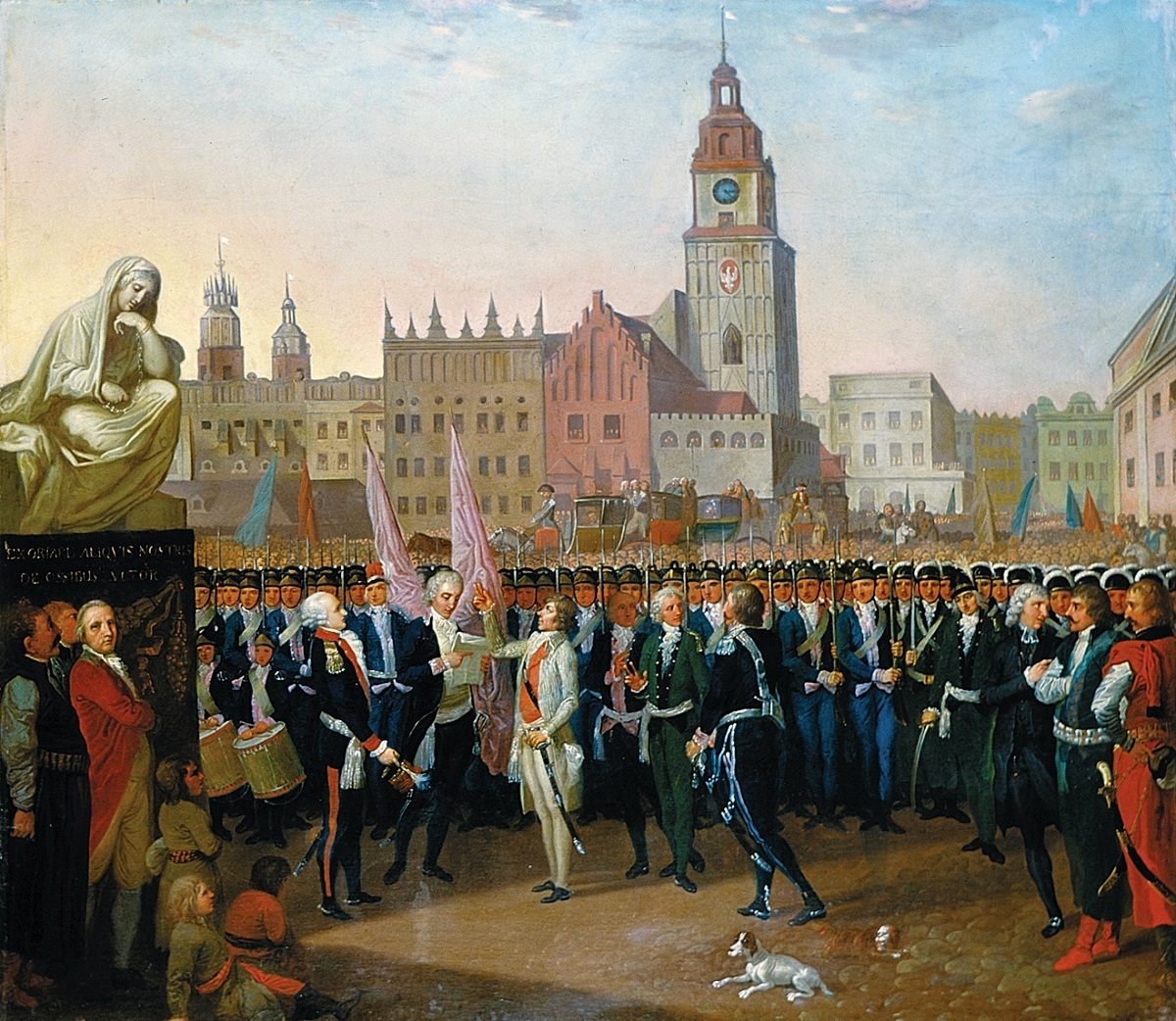|
ŇĀabiszyn
ŇĀabiszyn is a small town in ŇĽnin County, in the Kuyavian-Pomeranian Voivodeship in Poland, with 4,452 inhabitants (2010). It is located on the Noteńá river near ŇĽnin, on the border between the historic regions of PaŇāuki and Kuyavia. History The first written mention of ŇĀabiszyn comes from the 13th century as an estate owned by a knight, located within medieval Piast-ruled Poland. A document from 1247 mentions Dezydery of ŇĀabiszyn, probably the owner of the settlement. In 1362 the village is mentioned as ''Labissino'' and ''Lambissiono.'' In the 14th century, ŇĀabiszyn belonged to the Prawdzic family. Thanks to their efforts, the settlement and the castle were granted town rights in 1369. In 1407, the town already had its own wax seal with the coat of arms depicting the right, open and severed hand with the inscription "ŇĀabiszyn". King WŇāadysŇāaw JagieŇāŇāo passed through ŇĀabiszyn on November 2, 1410 , on his way from InowrocŇāaw to Szubin after the victorious Battle o ... [...More Info...] [...Related Items...] OR: [Wikipedia] [Google] [Baidu] [Amazon] |
Gmina ŇĀabiszyn
__NOTOC__ Gmina ŇĀabiszyn is an urban-rural gmina (administrative district) in ŇĽnin County, Kuyavian-Pomeranian Voivodeship, in north-central Poland. Its seat is the town of ŇĀabiszyn, which lies approximately north-east of ŇĽnin and south of Bydgoszcz. The gmina covers an area of , and as of 2006 its total population is 9,435 (out of which the population of ŇĀabiszyn amounts to 4,473, and the population of the rural part of the gmina is 4,962). Villages Apart from the town of ŇĀabiszyn, Gmina ŇĀabiszyn contains the villages and settlements of Annowo, Antoniewo, Buszkowo, JabŇā√≥wko, JabŇāowo PaŇāuckie, JeŇľewice, JeŇľewo, KńÖpie, Klotyldowo, ŇĀabiszyn-WieŇõ, LubostroŇĄ, Nowe DńÖbie, Obielewo, Ob√≥rznia, Ojrzanowo, Opor√≥wek, Oporowo, Ostatkowo, Pszcz√≥Ňāczyn, Rzywno, Smerzyn, Smogorzewo, Wielki Sosnowiec, WŇāadysŇāawowo, Wyrńôba, ZaŇāachowo and Zdziersk. Neighbouring gminas Gmina ŇĀabiszyn is bordered by the gminas of Barcin, BiaŇāe BŇāota, Nowa WieŇ ... [...More Info...] [...Related Items...] OR: [Wikipedia] [Google] [Baidu] [Amazon] |
ŇĽnin County
__NOTOC__ ŇĽnin County () is a unit of territorial administration and local government (powiat) in Kuyavian-Pomeranian Voivodeship, north-central Poland. It came into being on January 1, 1999, as a result of the Polish local government reforms passed in 1998. Its administrative seat and largest town is ŇĽnin, which lies south-west of Bydgoszcz and west of ToruŇĄ. The county contains three other towns: Barcin, lying east of ŇĽnin, ŇĀabiszyn, lying north-east of ŇĽnin, and Janowiec Wielkopolski, south-west of ŇĽnin. The county covers an area of . As of 2019 its total population is 68,113, out of which the population of ŇĽnin is 13,864, that of Barcin is 7,408, that of ŇĀabiszyn is 4,472, that of Janowiec Wielkopolski is 3,953, and the rural population is 38,416. Neighbouring counties ŇĽnin County is bordered by NakŇāo County to the north, Bydgoszcz County to the north-east, InowrocŇāaw County to the east, Mogilno County to the south-east, Gniezno County to the south and Wń ... [...More Info...] [...Related Items...] OR: [Wikipedia] [Google] [Baidu] [Amazon] |
Noteńá
The Noteńá (; , ) is a river in central Poland with a length of (7th longest) and a basin area of . Statistics Poland, p. 85-86 It is the largest tributary of the Warta river and lies completely within Poland. Course  It rises in the
It rises in the
|
KoŇõciuszko Uprising
The KoŇõciuszko Uprising, also known as the Polish Uprising of 1794, Second Polish War, Polish Campaign of 1794, and the Polish Revolution of 1794, was an uprising against the Russian and Prussian influence on the Polish‚ÄďLithuanian Commonwealth, led by Tadeusz KoŇõciuszko in Poland-Lithuania and the Prussian partition in 1794. It was a failed attempt to liberate the Polish‚ÄďLithuanian Commonwealth from external influence after the Second Partition of Poland (1793) and the creation of the Targowica Confederation. Background Decline of the Commonwealth By the early 18th century, the magnates of Poland and Lithuania controlled the state ‚Äď or rather, they managed to ensure that no reforms would be carried out that might weaken their privileged status (the " Golden Freedoms"). Through the abuse of the '' liberum veto'' rule which enabled any deputy to paralyze the Sejm (Commonwealth's parliament) proceedings, deputies bribed by magnates or foreign powers or those sim ... [...More Info...] [...Related Items...] OR: [Wikipedia] [Google] [Baidu] [Amazon] |
PaŇāuki
PaŇāuki () is a historic and ethnographic region lying in central Poland, part of Greater Poland neighbouring Pomerania and Kuyavia. In terms of administrative division the region lies in Kuyavian-Pomeranian Voivodship and Greater Poland Voivodship. A diverse relief, forests and numerous lakes serve as tourist attractions. PaŇāuki is commonly called "the land of 130 lakes" or sometimes even "Little Mazury". The "Piast Trail", leading through several places connected with the origins of the Polish State (Gniezno, Kruszwica), runs across the south of PaŇāuki. ŇĽnin, Szubin, Kcynia and Barcin are major towns of the regions. Biskupin, Wenecja and GńÖsawa also attract visitors. History The name PaŇāuki is likely derived from Ňāuk, Ňāńôk, or Ňāńôg, signifying grassy lowlands between arable land. An alternative theory suggests the name comes from the shape of the small hilltops which dot the landscape. The name appeared in the 14th century in the Latin form ''terra Palucacensis ... [...More Info...] [...Related Items...] OR: [Wikipedia] [Google] [Baidu] [Amazon] |
List Of Sovereign States
The following is a list providing an overview of sovereign states around the world with information on their status and recognition of their sovereignty. The 205 listed states can be divided into three categories based on membership within the United Nations System: 193 member states of the United Nations, UN member states, two United Nations General Assembly observers#Current non-member observers, UN General Assembly non-member observer states, and ten other states. The ''sovereignty dispute'' column indicates states having undisputed sovereignty (188 states, of which there are 187 UN member states and one UN General Assembly non-member observer state), states having disputed sovereignty (15 states, of which there are six UN member states, one UN General Assembly non-member observer state, and eight de facto states), and states having a political status of the Cook Islands and Niue, special political status (two states, both in associated state, free association with New ... [...More Info...] [...Related Items...] OR: [Wikipedia] [Google] [Baidu] [Amazon] |
Private Town
Private towns in the Polish‚ÄďLithuanian Commonwealth were privately owned towns within the lands owned by magnates, bishops, knights and princes, among others. Amongst the most well-known former private magnate towns are BiaŇāystok, ZamoŇõńá, Rzesz√≥w, PuŇāawy, Tarn√≥w, Siedlce, BiaŇāa Podlaska, Ivano-Frankivsk, Ternopil and Uman. Magnate palaces and castles can be often found in former private magnate towns. Examples include the Branicki Palace in BiaŇāystok; the Czartoryski Palace in PuŇāawy; the Zamoyski Palace in ZamoŇõńá; the Lubomirski Castle in Rzesz√≥w; the RadziwiŇāŇā Palace in BiaŇāa Podlaska; the OgiŇĄski Palace in Siedlce; the Potocki Palaces in Mińôdzyrzec Podlaski, Tulchyn and Vysokaye; the WiŇõniowiecki Palace in Vyshnivets; and the Zbaraski Castle in Zbarazh. Also various other landmarks were often founded by the owners, including town halls, churches, monasteries, schools and theatres, some rather unique, like the Mannerist Kalwaria Zebrzydowska Park an ... [...More Info...] [...Related Items...] OR: [Wikipedia] [Google] [Baidu] [Amazon] |
Kalisz Voivodeship (1314‚Äď1793)
Kalisz Voivodeship 1314‚Äď1793 (, ) was an administrative unit of Poland from 1314 to the Second Partition of Poland in 1793. It was part of the Greater Polish . Its capital was in Kalisz, and together with neighboring PoznaŇĄ Voivodeship, Kalisz elected general starosta of Greater Poland. The sejmiks for the two voivodeships took place at Ňöroda Wielkopolska, while general sejmik for the whole Province of Greater Poland took place in KoŇāo, at the Bernardine Abbey. The territory of the voivodeship remained unchanged from 1314 until 1768, when Gniezno Voivodeship was carved out of its northern three counties. Its original area was 15,320 km2., but after 1768 it shrank to . Local starostas resided at Kalisz, Gniezno, Konin, Kcynia, Naklo, Pyzdry, and ZŇāot√≥w. Kalisz Voivodeship had eight senators. These were: Archbishop of Gniezno, Voivode of Kalisz (who resided at the Kalisz Royal Castle), Castellan of Kalisz, Castellan of Gniezno, and Castellans of LńÖd, Nak ... [...More Info...] [...Related Items...] OR: [Wikipedia] [Google] [Baidu] [Amazon] |
Greater Poland Province, Crown Of The Kingdom Of Poland
Greater Poland Province () was an administrative division of the Crown of the Kingdom of Poland from 1569 until 1795. The name of the province comes from the historic land of Greater Poland. The Greater Poland Province consisted initially of twelve voivodeships (after 1768 thirteen voivodeships) and one duchy: # BrzeŇõńá Kujawski Voivodeship # CheŇāmno Voivodeship # Gniezno Voivodeship, est. in 1768 # InowrocŇāaw Voivodeship # Kalisz Voivodeship # ŇĀńôczyca Voivodeship # Malbork Voivodeship # Masovian Voivodeship # PŇāock Voivodeship # Pomeranian Voivodeship # PoznaŇĄ Voivodeship # Rawa Voivodeship # Sieradz Voivodeship # Prince-Bishopric of Warmia The location of the Crown Tribunal for the Greater Poland Province (the highest appeal court of the province) was Piotrk√≥w Trybunalski, and after the Convocation Sejm (1764) also PoznaŇĄ and Bydgoszcz. Cities The five most influential cities, i.e. Warsaw, PoznaŇĄ, GdaŇĄsk, ToruŇĄ and ElblńÖg ElblńÖg (; ; ) is a city in ... [...More Info...] [...Related Items...] OR: [Wikipedia] [Google] [Baidu] [Amazon] |
Polish Academy Of Sciences
The Polish Academy of Sciences (, PAN) is a Polish state-sponsored institution of higher learning. Headquartered in Warsaw, it is responsible for spearheading the development of science across the country by a society of distinguished scholars and a network of research institutes. It was established in 1951, during the early period of the Polish People's Republic following World War II. History The Polish Academy of Sciences is a Polish state-sponsored institution of higher learning, headquartered in Warsaw, that was established by the merger of earlier science societies, including the Polish Academy of Learning (''Polska Akademia UmiejńôtnoŇõci'', abbreviated ''PAU''), with its seat in Krak√≥w, and the Warsaw Society of Friends of Learning (Science), which had been founded in the late 18th century. The Polish Academy of Sciences functions as a learned society acting through an elected assembly of leading scholars and research institutions. The Academy has also, operating throug ... [...More Info...] [...Related Items...] OR: [Wikipedia] [Google] [Baidu] [Amazon] |
Kalisz
Kalisz () is a city in central Poland, and the second-largest city in the Greater Poland Voivodeship, with 97,905 residents (December 2021). It is the capital city of the Kalisz Region. Situated on the Prosna river in the southeastern part of Greater Poland, the city forms a conurbation with the nearby towns of Ostr√≥w Wielkopolski and Nowe Skalmierzyce. Kalisz is one of the oldest cities in Poland and one of the two traditional capitals of Greater Poland (alongside PoznaŇĄ). It has served as an important regional center in Poland since the Middle Ages as a provincial capital and notable royal city. It is one of the historical burial sites of medieval Polish monarchs and dukes of the Piast dynasty and the site of a number of significant events in Polish history as well as several battles. Since the 19th century it has been the center of an industrial district. It is the cultural, scientific, educational and administrative center of the eastern and southern Greater Poland regio ... [...More Info...] [...Related Items...] OR: [Wikipedia] [Google] [Baidu] [Amazon] |




